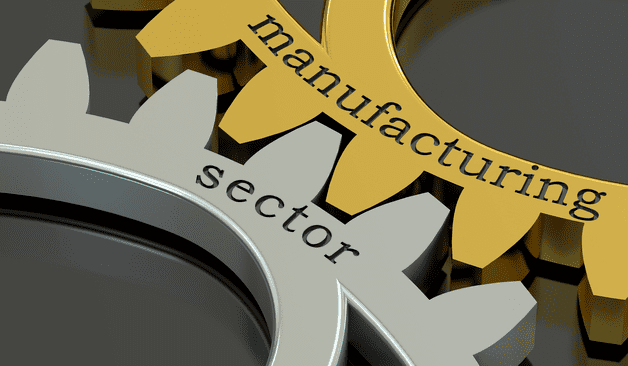
The share of Manufacturing sector in the Indian economy is on a rise
Manufacturing sector’s share in the Indian economy reached the pre-covid level of ~18% of GVA (Gross Value Added) in FY22 and is poised to hit an all-time high in the medium term:
In nominal terms, the GVA of India’s manufacturing sector grew 22% YoY and stood at Rs33.1trn in FY22 constituting 15.5% of GVA (18.2% of GVA in real terms). To be sure the manufacturing sector as a percentage of GVA in real term has stagnated in the 17- 18% range over the past decade after rising rapidly during 2002-2010 period driven by a strong capex cycle
Triggers for manufacturing activity:
Various enablers for higher growth in manufacturing activity going ahead are the nascent signs of capex cycle recovery, which includes the real estate cycle government policy initiatives such as the PLI schemes, continued FDI inflows and China+1 related export opportunities amongst others. Also, the Russia-Ukraine conflict has increased the urgency to become self-sufficient in terms of energy and defence requirements, which are large opportunities for manufacturing in India.
Formalisation of manufacturing activity accelerated post covid:
Granular data on manufacturing GVA as per the NAS 2022 indicates, the corporate sector’s share shot up to a decadal high of 89% in FY21 as covid is likely to have impacted manufacturing by the household sector (unorganised sector) much more, thereby resulting in market share gain for the organised corporates
Biggest: Top-5 manufacturing sectoral contributors to GVA in corporate sector in India’s economy are:
transport equipment (11.6%), chemicals (10.5%), iron & steel (9.3%), pharmaceuticals (8.6%) and food products (7.5%).
Fastest: Top-5 growth sectors within GVA from manufacturing in corporate sector (9-year CAGR ending FY21) are:
communication equipment (14.7%), food products (14.3%), furniture (10.5%), pharmaceuticals (10.3%), and rubber & plastic products (10.3%) [bracket numbers 9-year CAGR]. Amongst the high-growth manufacturing activities, communication equipment, and furniture, have a relatively small base of around Rs120bn-130bn in terms of sectoral GVA as of FY21.
Manufacturing sectors likely to revive on back of capex recovery:
Growth laggard-sectors over the past nine years within manufacturing, which could see revival from the imminent capex recovery, are: machinery and equipment, electrical equipment and fabricated metal products, which contribute 6.6%, 3.4% and 2.8% respectively to GVA from manufacturing in the corporate sector. As the name suggests, the laggard-sectors are largely capital goods. Fabricated metal products include weapons and ammunition.
GVA from manufacturing in household sector (unorganised sector) stood at Rs2.9trn in FY21 with top contributions from textiles (24.5%), furniture (11.8%), wood products (10%) and food products (8.3%). Most of the key manufacturing segments in the household sector are labour-intensive.
Disclaimer: ICICI Securities Ltd. (I-Sec). Registered office of I-Sec is at ICICI Securities Ltd. - ICICI Venture House, Appasaheb Marathe Marg, Prabhadevi, Mumbai - 400 025, India, Tel No : 022 - 6807 7100. I-Sec is a Member of National Stock Exchange of India Ltd (Member Code: 07730), BSE Ltd (Member Code: 103) and Member of Multi Commodity Exchange of India Ltd.(Member Code: 56250) and having SEBI registration no. INZ000183631. I-Sec is a SEBI registered with SEBI as a Research Analyst vide registration no. INH000000990. Name of the Compliance officer (broking): Mr. Anoop Goyal, Contact number: 022-40701000, E-mail address: complianceofficer@icicisecurities.com. Investments in securities market are subject to market risks, read all the related documents carefully before investing. The contents herein above shall not be considered as an invitation or persuasion to trade or invest. I-Sec and affiliates accept no liabilities for any loss or damage of any kind arising out of any actions taken in reliance thereon. The non-broking products / services like Research, etc. are not exchange traded products / services and all disputes with respect to such activities would not have access to Exchange investor redressal or Arbitration mechanism. The contents herein above are solely for informational purpose and may not be used or considered as an offer document or solicitation of offer to buy or sell or subscribe for securities or other financial instruments or any other product.










